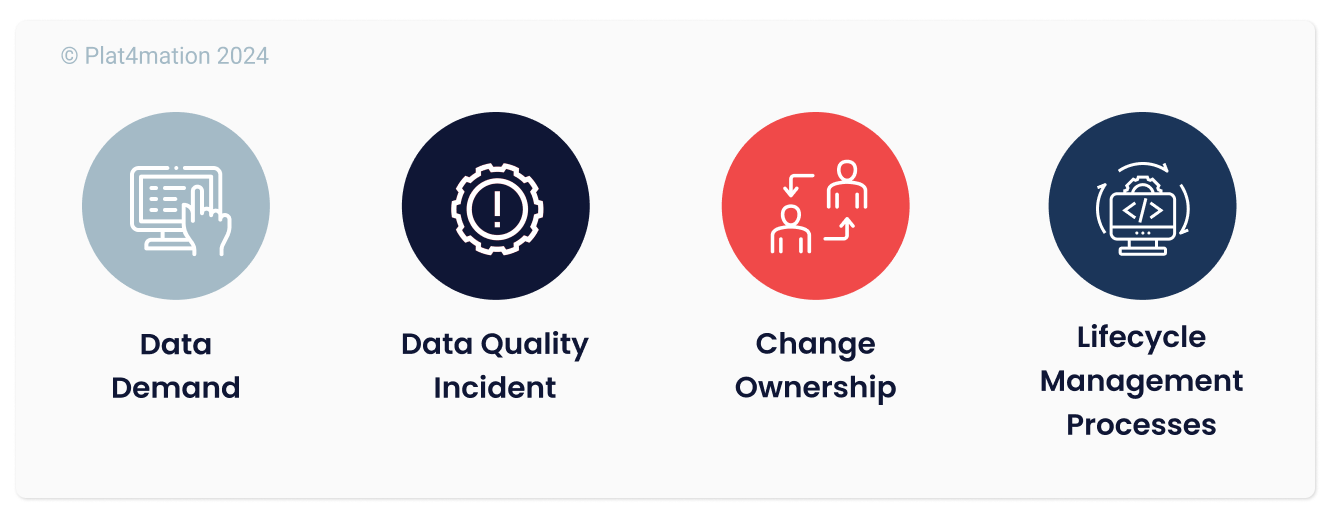Contact person
Shruthi Sajid
Business Consultant

An effective CMDB governance needs a healthy CMDB. But why is it so important?
CMDB is like a central hub that holds all the key information about an organization’s IT infrastructure— ranging from hardware and software assets to network configurations and service relationships.
However, we often see organizations struggle to keep their CMDB healthy and accurate, which is crucial for smart, data-informed decisions. That’s why CMDB plays such a vital role.
A self-healing CMDB starts with getting the foundation in place, after which we leverage the platform capabilities to allow for lower manual effort and continuous improvement of the data quality.
To get the foundation in place, it’s important to define the right governance model within the organization and establish ownership to the right stakeholders and owners. In addition, it’s also crucial to define and enable the Target Model and Lifecycle Management Processes to create, update and retire assets in the CMDB.
The right governance model includes:
Organizations should also prioritize continuous improvement and adapt their CMDB governance practices to align with evolving business needs, technological advancements, and regulatory requirements.
The key to setting up a self-healing CMDB is creating a central CMDB Institute. The role of the CMDB Institute is to facilitate and steer data quality improvement activities within the organization.
By taking on these roles, the CMDB Institute ensures accurate data quality insights, enabling executives and leadership to make informed decision
Establishing the right roles and responsibilities is key to a well-structured governance for CMDB. This includes identifying key stakeholders involved in maintaining the quality of the data and steering further improvement initiatives.

Domain Owner – Responsible for defining the (logical) target model, including data definitions and access policies. Ensure that all Configuration Items (CIs) and their relationships are fully and accurately registered, and that sufficient resources are in place to maintain CI data quality.

Class Owner – Has detailed expert knowledge of the owned class(es). Responsible for defining the logical target model, including data definitions and access policies. Ensures the complete and accurate registration of Configuration Items (CIs) and their relationships, as well as the integration within the owned class(es).

Data Steward – Responsible for the day-to-day data management activities, including creation, validation, maintenance and correction, to ensure the complete and correct registration of CIs or specific attributes.
A well-structured CMDB Governance include processes that support the quality of data. The CMDB institute supports the following processes:

To steer the continuous improvement of data quality, we need a couple of meetings focused on tracking data quality progress. The following meetings are important:
Having these meetings in place with the right stakeholders not only enables alignment on data quality goals but also fosters a way to drive strategies that can build an accurate and healthy CMDB.
Maintaining a healthy CMDB governance is essential for organizations to realize the full potential of their Configuration Management Database (CMDB) and effectively support their IT Service Management (ITSM) processes. Want to know if you’re following the best practices? Take our assessment to find out!
By implementing robust governance practices, organizations can ensure the accuracy, reliability, and relevance of CMDB data. Thereby, enhancing decision-making, reducing risks, and improving service delivery.



Sign up to our monthly Flow@Work Exclusive newsletter to get free access to our expertise and lots of tips and tricks to make work flow on the Now® Platform.